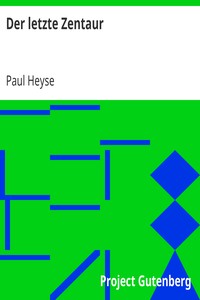| Summary |
"Der letzte Zentaur" by Paul Heyse is a novella written in the early 20th century, specifically in 1904. The story revolves around the themes of nostalgia, the passage of time, and the clash between the ancient and modern worlds, as represented by the mythical creature, the centaur, who finds himself in a contemporary society that has moved on from the ideals of beauty and myth. The novella intricately intertwines elements of realism and fantasy, showcasing the characters' deep reflections on their lost past and the changing landscape of their existence. The narrative begins with a protagonist wandering through a quiet city and reminiscing about his youthful adventures in a wine tavern, now evoking a sense of melancholic nostalgia. As he is drawn back into this familiar place, he encounters a gathering of old comrades, marked by changes and unspoken sorrows. The story takes a fantastical turn when the character meets a real centaur who has awakened after centuries, only to find himself lost in a world that has entirely forsaken the values of his ancient heritage. The centaur's interactions with the townsfolk lead to a poignant commentary on societal shifts, alienation, and the enduring human desire for connection, ultimately culminating in a bittersweet reflection on what is lost to progress and time. (This is an automatically generated summary.)
|

